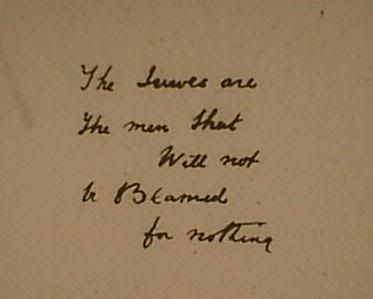Originally posted by Fisherman
View Post
No... Long was no more a litter-warden than he was a graffiti detector. If he missed noticing the presence/absence of a block of white graffiti on a black background, he would just as easily have missed noticing the presence/absence of a crumpled rag tossed into the darkened passageway behind it.





Leave a comment: